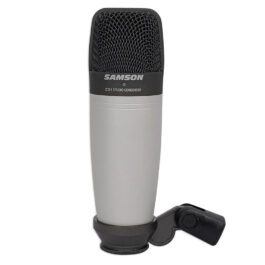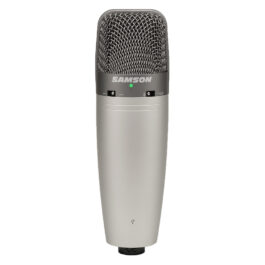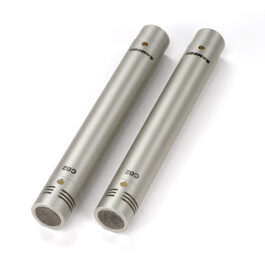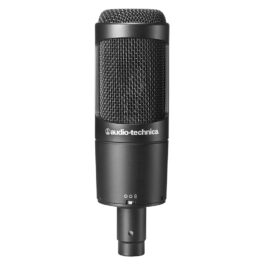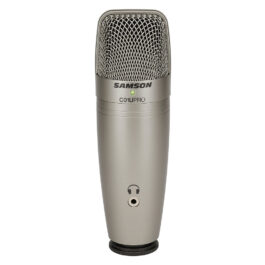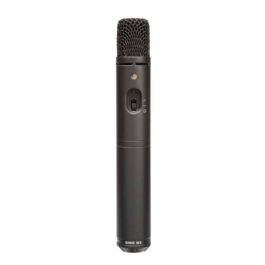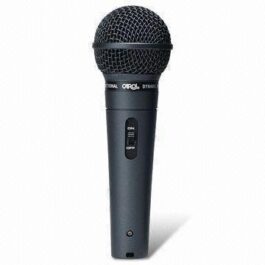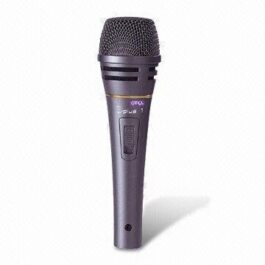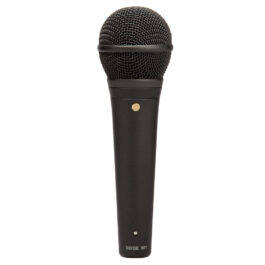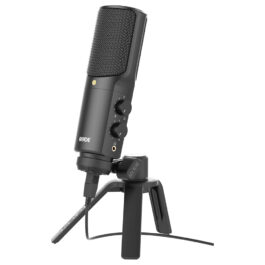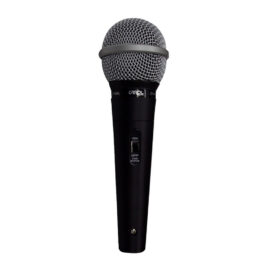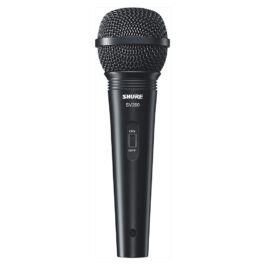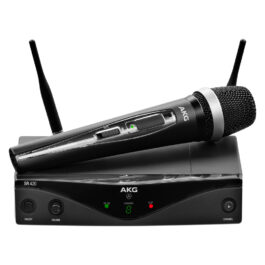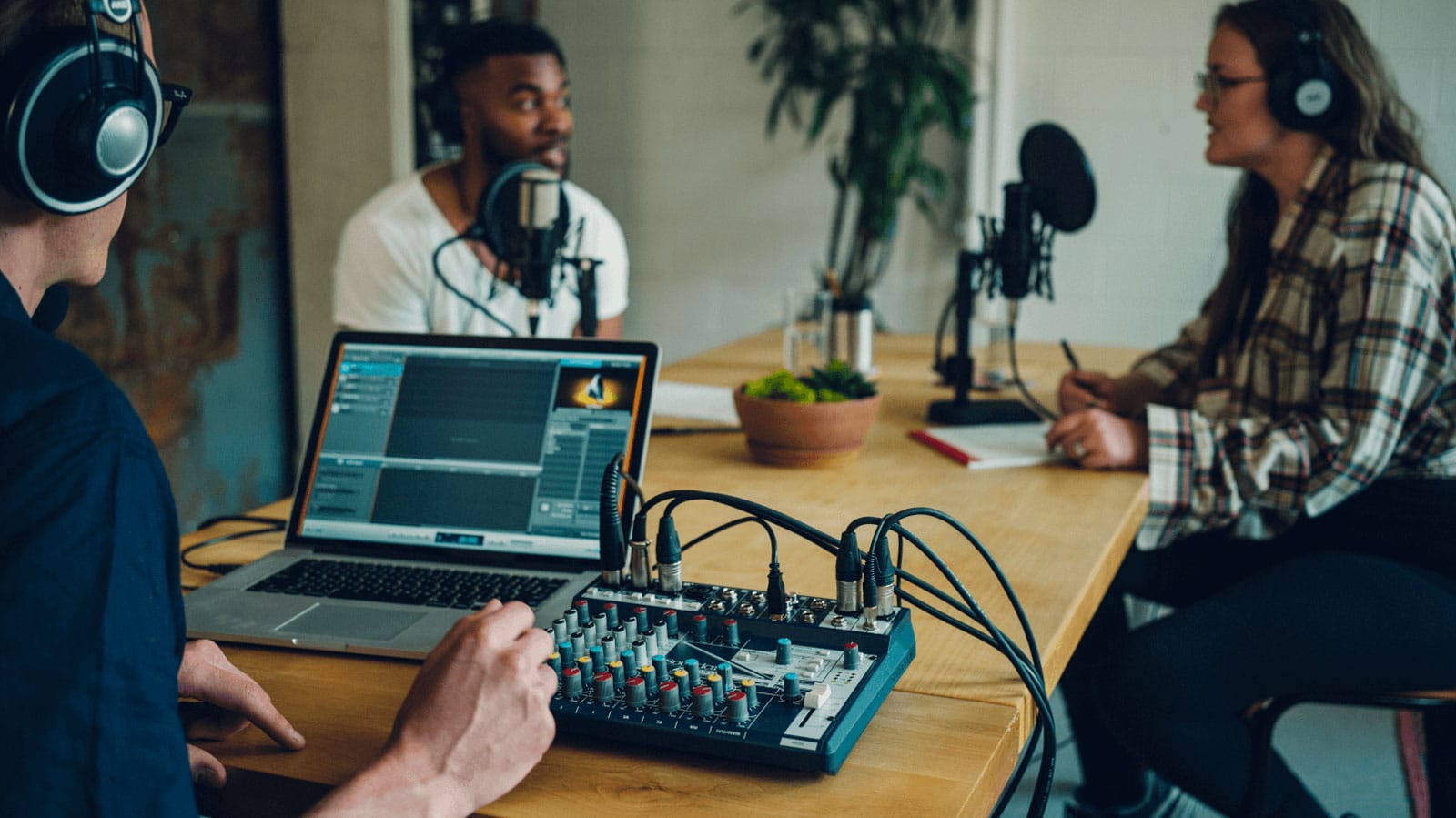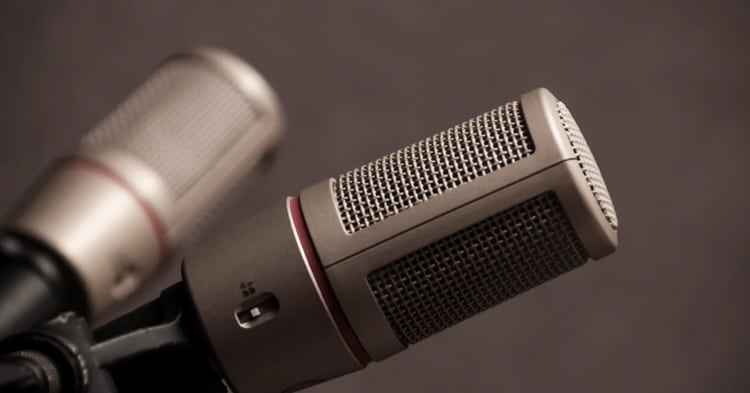
Microphones are some of the most vital tools in a musician’s toolbox. And like with any tool, it’s imperative that you use the right tool for the job. Sure, a builder could build an entire house using nothing but a hammer, but would you trust living in that house? And how much longer do you think it would take to build that house?
Using the right microphone for the job is more than ensuring that you get the ideal tone. A studio microphone, for example, is far too sensitive to be used on stage. If you do end up using it on stage, you are almost guaranteed to suffer from feedback. In some extreme cases, you might even damage the microphone.
The first thing you need to do when selecting a microphone is to establish what you want to use the mic for. This isn’t just a matter of deciding if you need a live performance mic or a studio mic. You should first determine whether you need an instrument mic, a drum mic, or a vocal mic. Now that you’ve done that let’s take a more in-depth look at condenser mics and dynamic microphones.
Condenser Microphones
Condenser microphones are best used to capture vocals and high frequencies. They are also the preferred type of microphone for most studio applications.
Also known as capacitor microphones, condenser mics are mainly used in studios because of their detail and accuracy. But how is this achieved? Condenser mics are constructed with a lightweight diaphragm which is suspended by a fixed plate. Sound waves cause pressure against the diaphragm, which causes it to move.
Because of the thin diaphragm, condenser mics are used to pick up delicate sounds. They also need a power source. While this usually comes in the form of phantom power, it is not uncommon to use a 9v battery. The added power to the microphone is what gives it its characteristic high-output sound.
While condenser mics are great for capturing acoustic guitars, they don’t work well for big booming sounds. If you want to mic up a singer with a powerful voice, or any big booming sound, your best option is a dynamic microphone.
Shop Condenser Mics
-
Birthday Sale Deal!
- Live Sound, Microphones
Rode M2 Handheld Live Condenser Microphone
-
R3,095R2,475FREE DELIVERY - Select options
-
Birthday Sale Deal!
- Studio & Recording, Recording Microphones
Samson C01 Condenser Microphone
-
R2,595R1,549FREE DELIVERY - Select options
-
Birthday Sale Deal!
- Studio & Recording, Recording Microphones
Samson C03 Condenser Microphone
-
R2,950R2,075FREE DELIVERY - Select options
-
- Out of Stock
- Studio & Recording, Recording Microphones
Samson C02C Single Condenser Microphone
-
R2,295R1,605FREE DELIVERY - Select options
-
-
- Out of Stock
- Studio & Recording, Recording Microphones
Audio-Technica AT2050 Multi-Pattern Condenser Microphone
-
R3,899R3,470FREE DELIVERY - Select options
-
-
Birthday Sale Deal!
- Studio & Recording, Recording Microphones, Content Creation, Microphones for Podcasting
Samson C01U Pro USB Condenser Microphone
-
R3,095R1,649FREE DELIVERY - Select options
-
Birthday Sale Deal!
- Recording Microphones, Content Creation, Microphones for Video
Rode NTG-4+ Directional Condenser Microphone
-
R8,695R7,355FREE DELIVERY - Select options
-
Birthday Sale Deal!
- Drums & Percussion, Drum Microphones, Live Sound, Microphones
Rode M3 Condenser Microphone
-
R3,095R2,475FREE DELIVERY - Select options
Dynamic Microphones
Dynamic microphones are best used for booming sounds and powerful vocals. Because of their ability to handle loud sounds, they are the preferred microphone for live use.
Unlike condensers microphones, a dynamic mic uses a wire coil to amplify signal picked up by the diaphragm. As a result, the output of a dynamic mic is lower than a condenser.
Another reason why dynamic microphones are great for live sound is that they are incredibly tough. While it’s not ideal to drop a microphone, if you drop your dynamic mic, you are far less likely to damage the mic than if you were to drop a condenser mic. Dynamic mics also don’t need batteries or phantom power, and usually, cost far less than condenser mics. A dynamic mic requires little to no maintenance, and if you practice a reasonable level of care, it will maintain its performance for a lifetime.
Shop Dynamic Microphones
-
Birthday Sale Deal!
-
Birthday Sale Deal!
- Live Sound, Microphones
Carol Plus 1 Microphone
-
R1,645R595FREE DELIVERY - Select options
-
Birthday Sale Deal!
- Live Sound, Microphones
Rode M1 Dynamic Microphone
-
R2,795R2,235FREE DELIVERY - Select options
-
Birthday Sale Deal!
- Recording Microphones, Content Creation, Microphones for Podcasting
Rode NT-USB Recording Microphone
-
R5,895R5,019FREE DELIVERY - Select options
-
- Out of Stock
- Studio & Recording, Recording Microphones
M-Audio Vocal USB Vocal Microphone
-
R2,350R1,895FREE DELIVERY - Select options
-
-
- Out of Stock
- Live Sound, Microphones
Carol GS-55 Vocal Microphone
-
R745R590FREE DELIVERY - Select options
-
-
Birthday Sale Deal!
- Live Sound, Microphones
Shure SV 200 Vocal Microphone
-
R770R660FREE DELIVERY - Select options
-
- Out of Stock
- Live Sound, Microphones
AKG WNS420 Wireless Headset Microphone
-
R10,750R8,385FREE DELIVERY - Select options
-
Ribbon Microphones
Ribbon mics have mostly fallen out of favour in modern times, but for a long time, they were the go-to microphone for the radio industry. As the name implies, Ribbon mics use a ribbon to capture sound.
The light metal ribbon used enables the mic to pick up the velocity of the air and not just air displacement. This allows for improved sensitivity to higher frequencies and the capturing of higher notes without the harshness. All this while retaining a warm vintage voicing.



